Yilong Li
PalmBench: A Comprehensive Benchmark of Compressed Large Language Models on Mobile Platforms
Oct 05, 2024



Abstract:Deploying large language models (LLMs) locally on mobile devices is advantageous in scenarios where transmitting data to remote cloud servers is either undesirable due to privacy concerns or impractical due to network connection. Recent advancements (MLC, 2023a; Gerganov, 2023) have facilitated the local deployment of LLMs. However, local deployment also presents challenges, particularly in balancing quality (generative performance), latency, and throughput within the hardware constraints of mobile devices. In this paper, we introduce our lightweight, all-in-one automated benchmarking framework that allows users to evaluate LLMs on mobile devices. We provide a comprehensive benchmark of various popular LLMs with different quantization configurations (both weights and activations) across multiple mobile platforms with varying hardware capabilities. Unlike traditional benchmarks that assess full-scale models on high-end GPU clusters, we focus on evaluating resource efficiency (memory and power consumption) and harmful output for compressed models on mobile devices. Our key observations include i) differences in energy efficiency and throughput across mobile platforms; ii) the impact of quantization on memory usage, GPU execution time, and power consumption; and iii) accuracy and performance degradation of quantized models compared to their non-quantized counterparts; and iv) the frequency of hallucinations and toxic content generated by compressed LLMs on mobile devices.
Neural Laplacian Operator for 3D Point Clouds
Sep 10, 2024Abstract:The discrete Laplacian operator holds a crucial role in 3D geometry processing, yet it is still challenging to define it on point clouds. Previous works mainly focused on constructing a local triangulation around each point to approximate the underlying manifold for defining the Laplacian operator, which may not be robust or accurate. In contrast, we simply use the K-nearest neighbors (KNN) graph constructed from the input point cloud and learn the Laplacian operator on the KNN graph with graph neural networks (GNNs). However, the ground-truth Laplacian operator is defined on a manifold mesh with a different connectivity from the KNN graph and thus cannot be directly used for training. To train the GNN, we propose a novel training scheme by imitating the behavior of the ground-truth Laplacian operator on a set of probe functions so that the learned Laplacian operator behaves similarly to the ground-truth Laplacian operator. We train our network on a subset of ShapeNet and evaluate it across a variety of point clouds. Compared with previous methods, our method reduces the error by an order of magnitude and excels in handling sparse point clouds with thin structures or sharp features. Our method also demonstrates a strong generalization ability to unseen shapes. With our learned Laplacian operator, we further apply a series of Laplacian-based geometry processing algorithms directly to point clouds and achieve accurate results, enabling many exciting possibilities for geometry processing on point clouds. The code and trained models are available at https://github.com/IntelligentGeometry/NeLo.
Gemini: Integrating Full-fledged Sensing upon Millimeter Wave Communications
Jul 04, 2024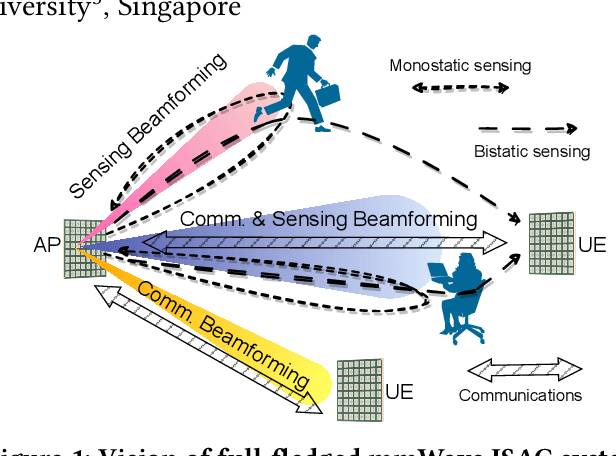
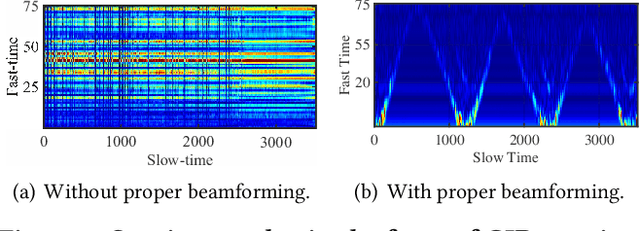
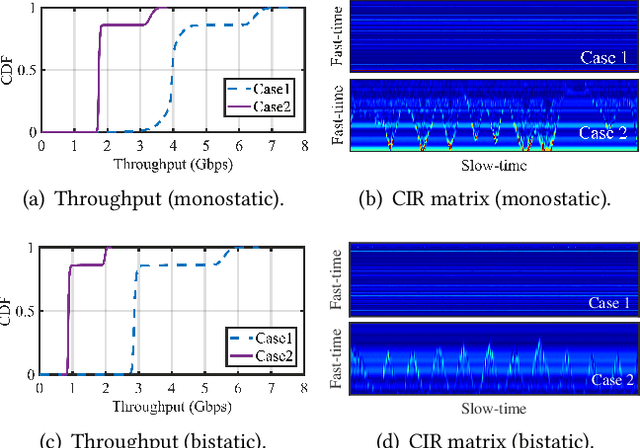
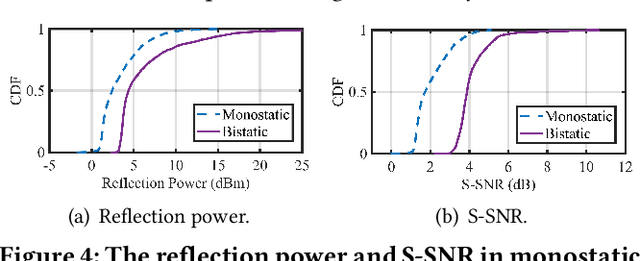
Abstract:Integrating millimeter wave (mmWave)technology in both communication and sensing is promising as it enables the reuse of existing spectrum and infrastructure without draining resources. Most existing systems piggyback sensing onto conventional communication modes without fully exploiting the potential of integrated sensing and communication (ISAC) in mmWave radios (not full-fledged). In this paper, we design and implement a full-fledged mmWave ISAC system Gemini; it delivers raw channel states to serve a broad category of sensing applications. We first propose the mmWave self-interference cancellation approach to extract the weak reflected signals for near-field sensing purposes. Then, we develop a joint optimization scheduling framework that can be utilized in accurate radar sensing while maximizing the communication throughput. Finally, we design a united fusion sensing algorithm to offer a better sensing performance via combining monostatic and bistatic modes. We evaluate our system in extensive experiments to demonstrate Gemini's capability of simultaneously operating sensing and communication, enabling mmWave ISAC to perform better than the commercial off-the-shelf mmWave radar for 5G cellular networks.
MEDUSA: Scalable Biometric Sensing in the Wild through Distributed MIMO Radars
Oct 10, 2023Abstract:Radar-based techniques for detecting vital signs have shown promise for continuous contactless vital sign sensing and healthcare applications. However, real-world indoor environments face significant challenges for existing vital sign monitoring systems. These include signal blockage in non-line-of-sight (NLOS) situations, movement of human subjects, and alterations in location and orientation. Additionally, these existing systems failed to address the challenge of tracking multiple targets simultaneously. To overcome these challenges, we present MEDUSA, a novel coherent ultra-wideband (UWB) based distributed multiple-input multiple-output (MIMO) radar system, especially it allows users to customize and disperse the $16 \times 16$ into sub-arrays. MEDUSA takes advantage of the diversity benefits of distributed yet wirelessly synchronized MIMO arrays to enable robust vital sign monitoring in real-world and daily living environments where human targets are moving and surrounded by obstacles. We've developed a scalable, self-supervised contrastive learning model which integrates seamlessly with our hardware platform. Each attention weight within the model corresponds to a specific antenna pair of Tx and Rx. The model proficiently recovers accurate vital sign waveforms by decomposing and correlating the mixed received signals, including comprising human motion, mobility, noise, and vital signs. Through extensive evaluations involving 21 participants and over 200 hours of collected data (3.75 TB in total, with 1.89 TB for static subjects and 1.86 TB for moving subjects), MEDUSA's performance has been validated, showing an average gain of 20% compared to existing systems employing COTS radar sensors. This demonstrates MEDUSA's spatial diversity gain for real-world vital sign monitoring, encompassing target and environmental dynamics in familiar and unfamiliar indoor environments.
CTooth+: A Large-scale Dental Cone Beam Computed Tomography Dataset and Benchmark for Tooth Volume Segmentation
Aug 02, 2022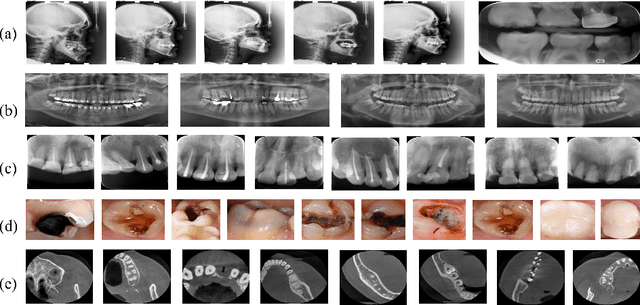

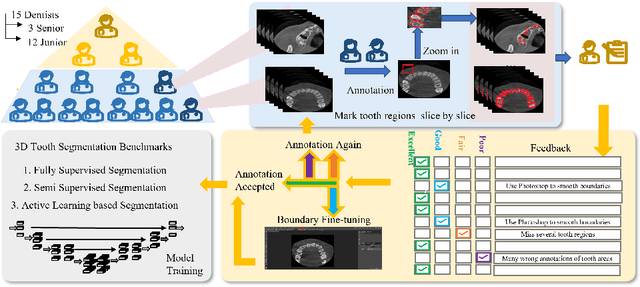

Abstract:Accurate tooth volume segmentation is a prerequisite for computer-aided dental analysis. Deep learning-based tooth segmentation methods have achieved satisfying performances but require a large quantity of tooth data with ground truth. The dental data publicly available is limited meaning the existing methods can not be reproduced, evaluated and applied in clinical practice. In this paper, we establish a 3D dental CBCT dataset CTooth+, with 22 fully annotated volumes and 146 unlabeled volumes. We further evaluate several state-of-the-art tooth volume segmentation strategies based on fully-supervised learning, semi-supervised learning and active learning, and define the performance principles. This work provides a new benchmark for the tooth volume segmentation task, and the experiment can serve as the baseline for future AI-based dental imaging research and clinical application development.
Evaluating the Practicality of Learned Image Compression
Jul 29, 2022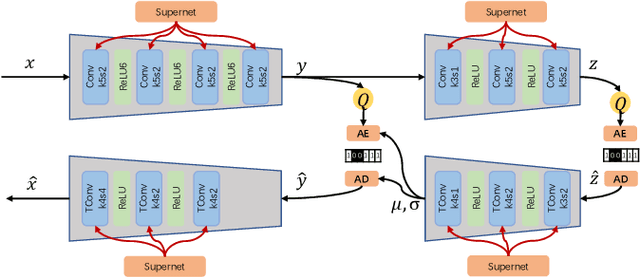
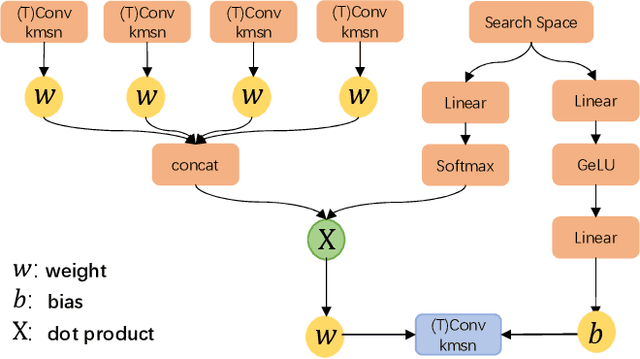
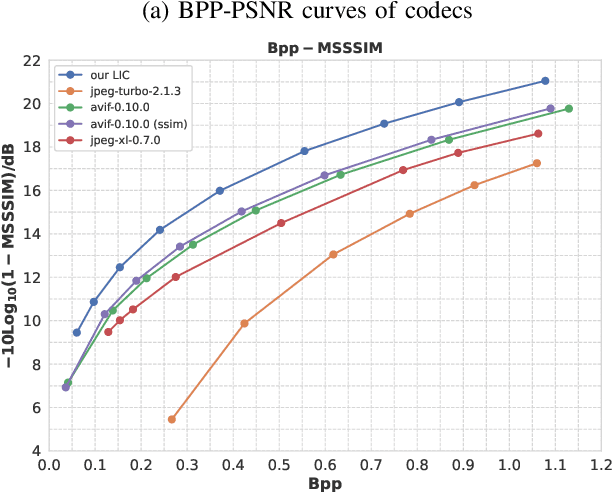
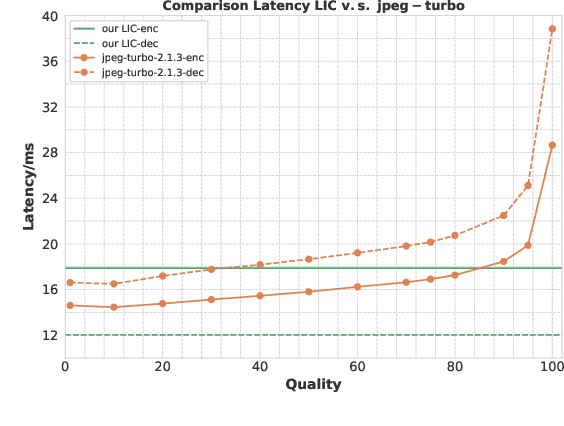
Abstract:Learned image compression has achieved extraordinary rate-distortion performance in PSNR and MS-SSIM compared to traditional methods. However, it suffers from intensive computation, which is intolerable for real-world applications and leads to its limited industrial application for now. In this paper, we introduce neural architecture search (NAS) to designing more efficient networks with lower latency, and leverage quantization to accelerate the inference process. Meanwhile, efforts in engineering like multi-threading and SIMD have been made to improve efficiency. Optimized using a hybrid loss of PSNR and MS-SSIM for better visual quality, we obtain much higher MS-SSIM than JPEG, JPEG XL and AVIF over all bit rates, and PSNR between that of JPEG XL and AVIF. Our software implementation of LIC achieves comparable or even faster inference speed compared to jpeg-turbo while being multiple times faster than JPEG XL and AVIF. Besides, our implementation of LIC reaches stunning throughput of 145 fps for encoding and 208 fps for decoding on a Tesla T4 GPU for 1080p images. On CPU, the latency of our implementation is comparable with JPEG XL.
DU-Net based Unsupervised Contrastive Learning for Cancer Segmentation in Histology Images
Jun 17, 2022

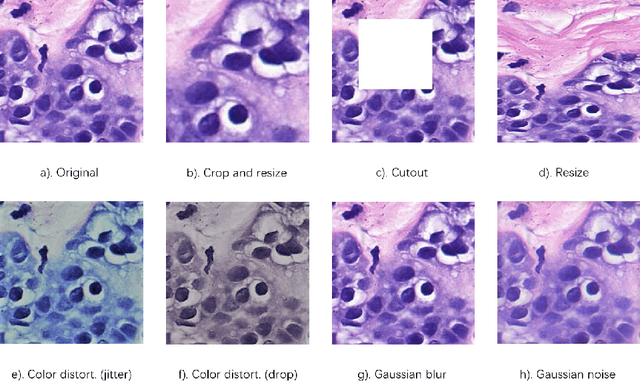

Abstract:In this paper, we introduce an unsupervised cancer segmentation framework for histology images. The framework involves an effective contrastive learning scheme for extracting distinctive visual representations for segmentation. The encoder is a Deep U-Net (DU-Net) structure that contains an extra fully convolution layer compared to the normal U-Net. A contrastive learning scheme is developed to solve the problem of lacking training sets with high-quality annotations on tumour boundaries. A specific set of data augmentation techniques are employed to improve the discriminability of the learned colour features from contrastive learning. Smoothing and noise elimination are conducted using convolutional Conditional Random Fields. The experiments demonstrate competitive performance in segmentation even better than some popular supervised networks.
Deep Learning Methods for Lung Cancer Segmentation in Whole-slide Histopathology Images -- the ACDC@LungHP Challenge 2019
Aug 21, 2020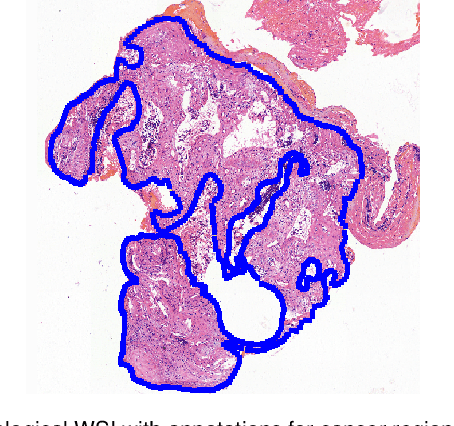
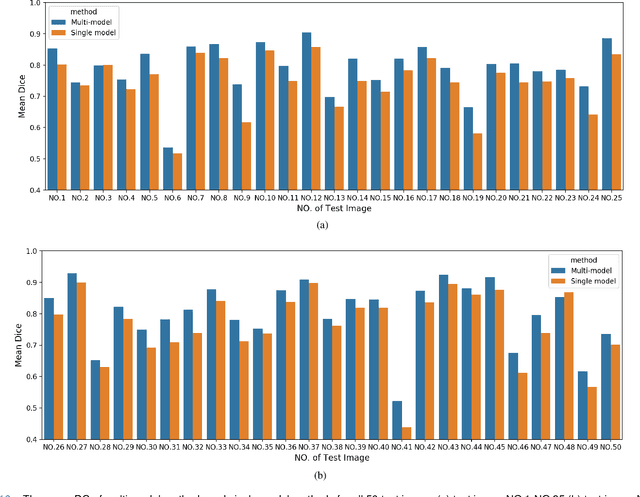
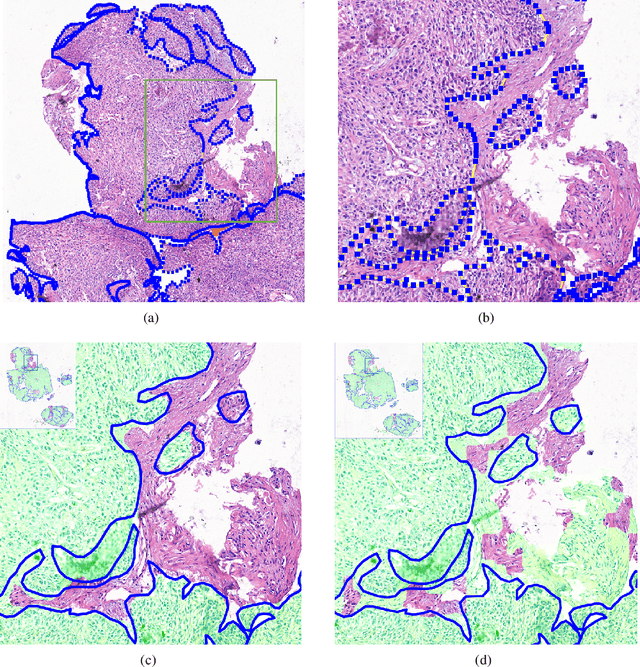
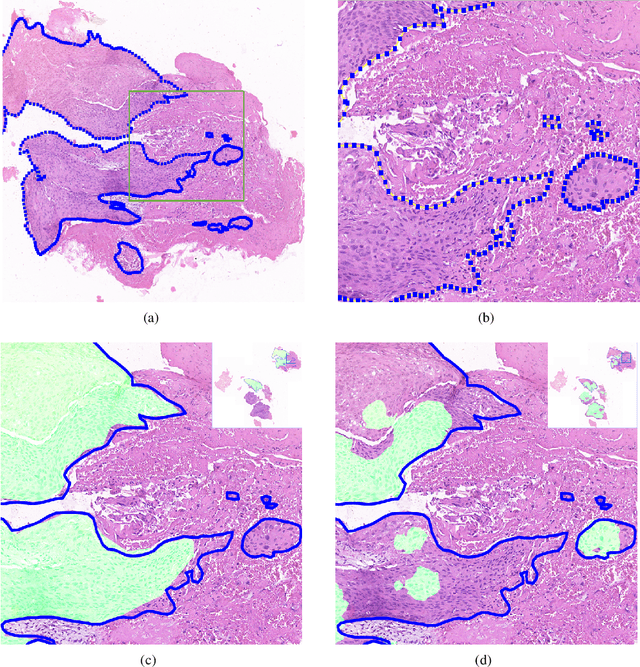
Abstract:Accurate segmentation of lung cancer in pathology slides is a critical step in improving patient care. We proposed the ACDC@LungHP (Automatic Cancer Detection and Classification in Whole-slide Lung Histopathology) challenge for evaluating different computer-aided diagnosis (CADs) methods on the automatic diagnosis of lung cancer. The ACDC@LungHP 2019 focused on segmentation (pixel-wise detection) of cancer tissue in whole slide imaging (WSI), using an annotated dataset of 150 training images and 50 test images from 200 patients. This paper reviews this challenge and summarizes the top 10 submitted methods for lung cancer segmentation. All methods were evaluated using the false positive rate, false negative rate, and DICE coefficient (DC). The DC ranged from 0.7354$\pm$0.1149 to 0.8372$\pm$0.0858. The DC of the best method was close to the inter-observer agreement (0.8398$\pm$0.0890). All methods were based on deep learning and categorized into two groups: multi-model method and single model method. In general, multi-model methods were significantly better ($\textit{p}$<$0.01$) than single model methods, with mean DC of 0.7966 and 0.7544, respectively. Deep learning based methods could potentially help pathologists find suspicious regions for further analysis of lung cancer in WSI.
 Add to Chrome
Add to Chrome Add to Firefox
Add to Firefox Add to Edge
Add to Edge